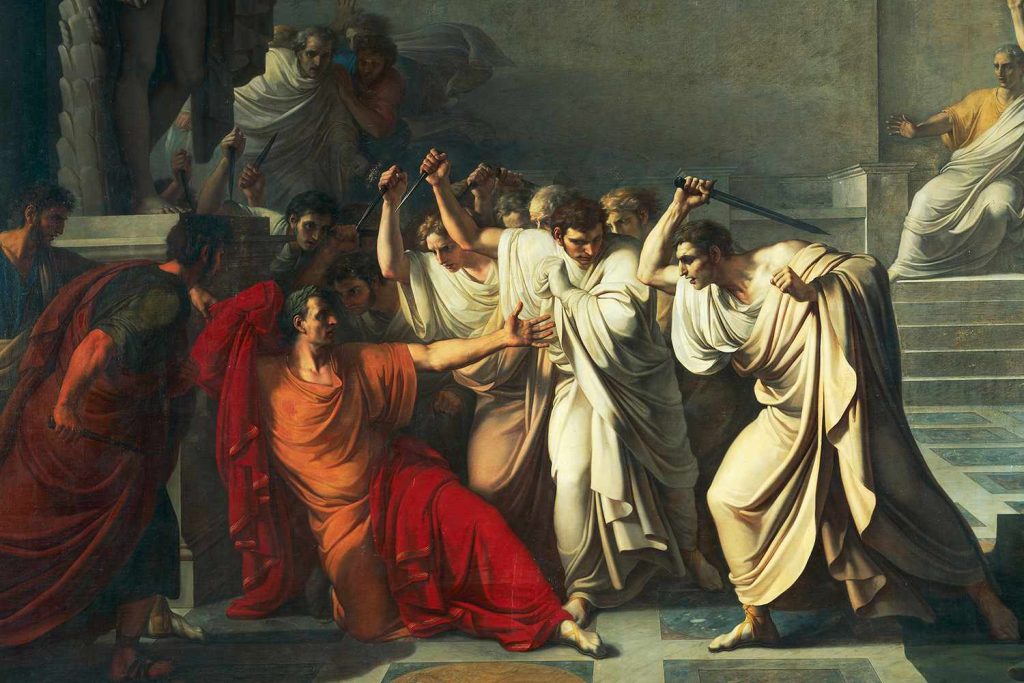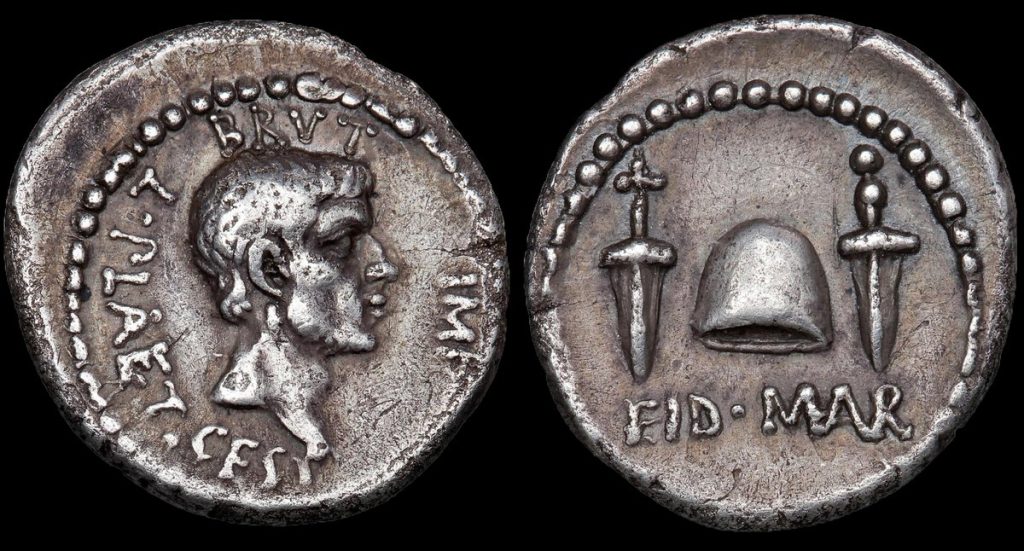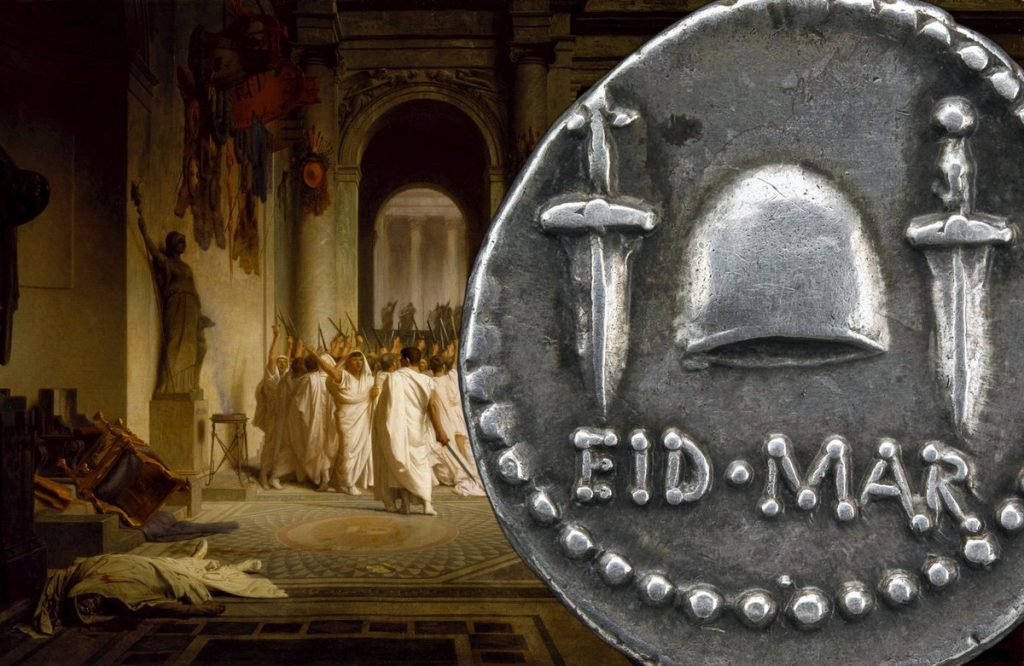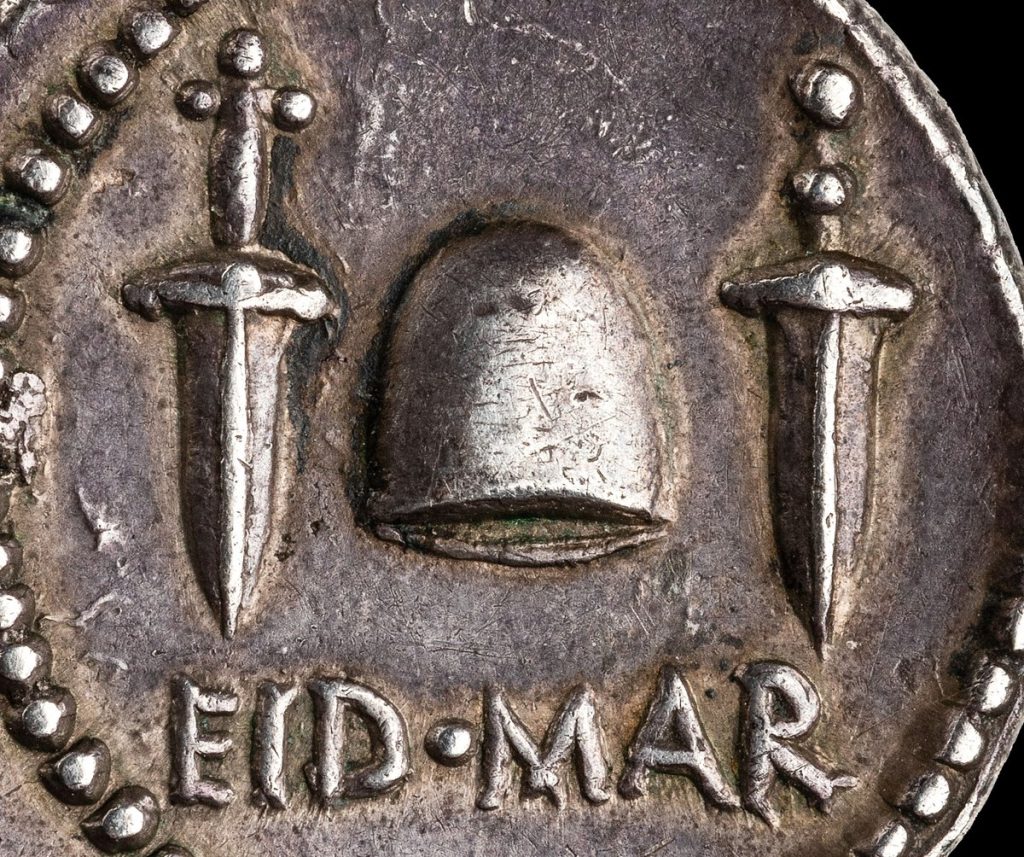And, no, Caesar did not invent the salad

15 March 2024 — Today is the Ides of March. Latin: “Idus Martias”. The Ides of March is the 74th day in the Roman calendar, corresponding to 15 March. It was marked by several religious observances and was notable for the Romans as a deadline for settling debts.
In 44 BC, it became notorious as the date of the assassination of Julius Caesar, which made the Ides of March a turning point in Roman history – an assassination by which senators hoped to preserve the Roman Republic.
The aftermath was not what they had hoped.
“Kalends”, “Nones” and “Ides” were ancient markers used to reference dates in relation to lunar phases. Ides simply referred to the first new moon of a given month, which usually fell between the 13th and 15th. In fact, the Ides of March once signified the new year, which meant celebrations and rejoicing.
And that’s not every month. It’s actually March, May, July and October.
According to Greek historian Plutarch, a seer really did warn Caesar that he would be at the very least injured by the Ides of March. Caesar did not heed the warning. On the day of his death, he saw the oracle and joked that he had made it to the Ides of March, to which the seer responded “The day had not yet ended”.
Plutarch’s “Lives of the Noble Greeks and Romans”, commonly called “Parallel Lives” or “Plutarch’s Lives”, is a series of 48 biographies of famous men arranged in pairs to illuminate their common moral virtues or failings, probably written at the beginning of the second century AD. Historians believe it to be very accurate.
As a serious Roman military mind he shows almost complete disinterest for the gossip intrigue surrounding the subject of his profiles, often sourcing his statements. Many historians who have tried to “fact check” him find his information must be considered reliable, insofar as it goes.
And Caesar salad was invented in the early 1920s by Caesar Cardini, an Italian chef who owned a restaurant in Tijuana, Mexico. He moved to Tijuana from California to avoid Prohibition, and it was there, on July 4th, 1924, where he invented the Caesar Salad.
AND TWO SIDE NOTES:
1. The location
The assassination of Caesar occurred at the old Roman Senate (an area called “Largo di Torre Argentina”) which is now just a ruin. It is a stone’s throw from our film production studios in Rome. From time to time I would end one of my videos from the location, and you can see the clip below. And, no, it is a “blank” clip. You will not be able to link to “my other videos” as I point into the sky:
2. The commemoration by Brutus
Having taken a leading role in the assassination of Julius Caesar on this day in 44 BC, aided by as many as 60 fellow conspirators, Brutus would commemorate the events of the Ides of March with this, the most infamous and enigmatic of all coins from the ancient world.

The coin shows the weapons and the motive of the assassins, with two daggers flanking a pileus cap of liberty, placed on the heads of those being freed from slavery. The blades of the Liberatores had, in the eyes of Brutus, released the Republic from a tyrant’s stranglehold.

Rather than a lone dagger, the coin depicts a pair of blades that viewers would have most likely understood to represent the weapons of both Marcus Junius Brutus and his fellow assassin, Gaius Cassius Longinus – now the leaders of the Republican cause in the East.
An inscription alongside the enigmatic still-life may have clarified the coin’s message or inspired the viewer with a rousing call for liberty; instead Brutus simply proclaims the fateful day and leave us to draw our own conclusions: Eidibus Martiis – “On the Ides of March”.
